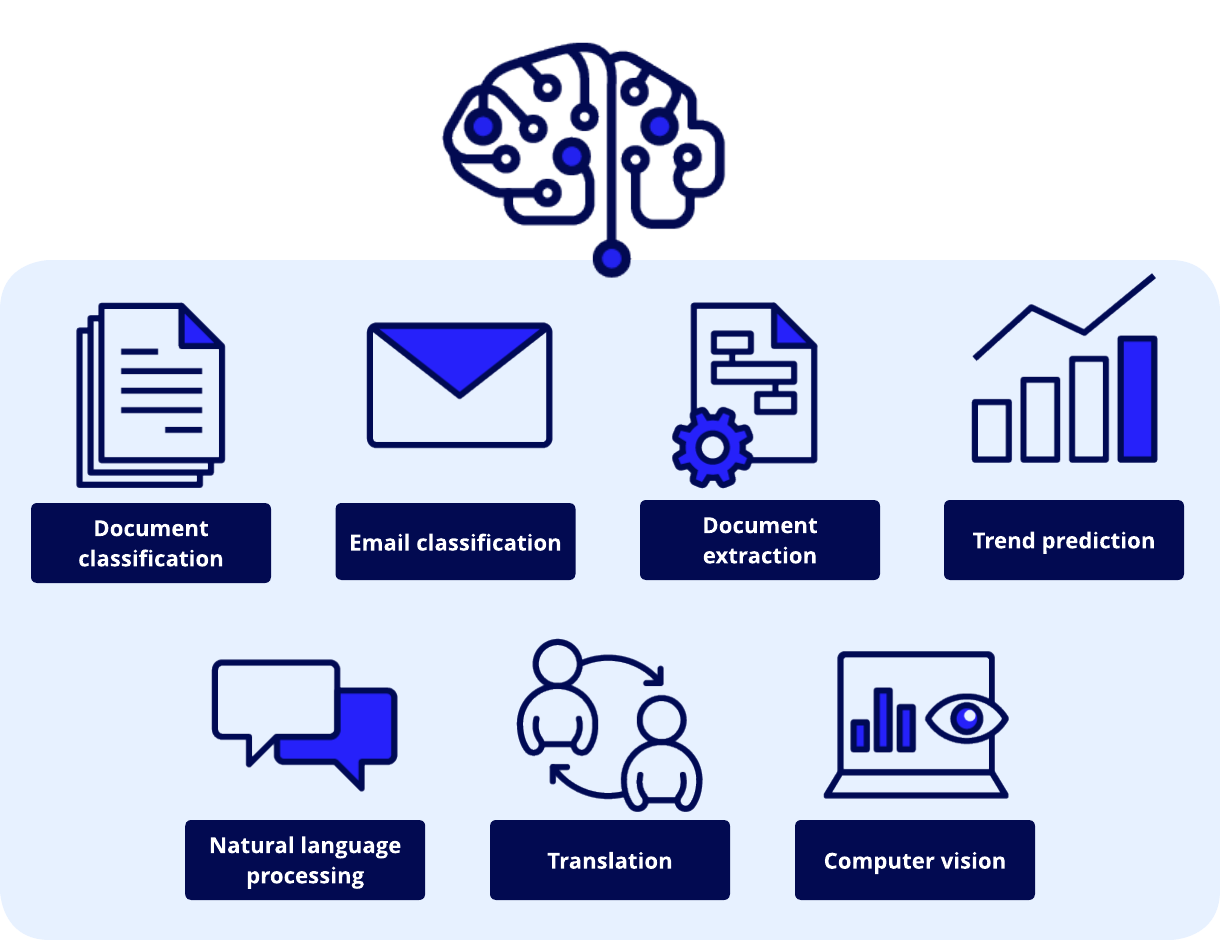In this course, you will learn how AI is defined in the industry, how it is defined at Appian, and explore Appian's AI capabilities.
Appian makes artificial intelligence (AI) approachable and flexible for a variety of applications and industries. Explore this documentation to learn about how AI can supercharge your automation practice.
IntroductionCopy link to clipboard
You may not always realize it, but you make hundreds – possible thousands – of decisions a day. From the minute you wake up, you're asked to make choices. What will you have for breakfast? What will you wear? What will you bring with you as you walk out the door?
Chances are you don't make these decisions in isolation. What you have for breakfast depends on how hungry you are. What you wear depends on the occasion. What you bring with you depends on where you're going and what the weather is like. It's a lot to think about!
You might not have to use much brain power to make these choices since you've had a lot of practice. Thanks to that practice, your brain has to work less, and you may have reached the point where this behavior feels like second nature. You consider your options and the circumstances, make a choice, and proceed with your day.

Now imagine if you had to make these decisions in your business processes. But instead of choosing what to eat for breakfast, you need to choose which type of document you're looking at. Imagine having to make this decision 5,000 times in a row. Not only can a computer do this faster, a computer doesn't need to take breaks or sick days. A computer won't get bored and start to make mistakes. A human being would be exhausted with this many decisions, but a computer can do it in minutes.
A human being can train the computer to make these decisions for them using AI. Rather than having to account for every possible scenario, you can train the computer to make decisions based on a number of factors. These decisions are informed by previous experience and related factors, just like your decision to have a croissant for breakfast or bring gloves with you as you leave the house.
Every day, AI allows people to focus on more critical and meaningful work by delegating routine tasks to intelligent machines and software. Integrating AI capabilities like speech recognition, computer vision, or document extraction into your business applications can make your processes faster, more accurate, and more reliable.

Appian provides multiple options and methods for using AI and machine learning (ML) in your business applications. Even better? We provide built-in AI capabilities that leverage the low-code design and deployment methods you're used to.
How businesses can use AICopy link to clipboard
Of course, businesses don't need to make decisions about what to wear or what to eat. Instead, businesses need to solve problems related to productivity and efficiency. Among those goals, businesses also need to consider who will build such tools and how to protect the data these tools will rely on. These are big questions to be carefully considered before jumping into AI:
- How do you plan to use it? Is AI the best solution for this challenge? To be worth the investment, AI needs to be carefully integrated into your existing workflows. This type of exploration can take a lot of time and resources to accomplish. Before you begin, it's helpful to determine whether AI is the best fit for your business challenge.
- What vendor will you use? Once you know how and when you want to use AI, you'll want to evaluate the available options. Be sure to consider how the vendor uses your data, discussed in the next question.
- How will you keep your data private and within your control? A publicly available AI tool might be appealing because of the low barrier to entry and no need for in-house development. However, these tools might not be best suited for your business if you wish to keep your data private. Once you send business data to these services, you aren't always able to control how it's used.
- Do you have a developer or contractor to build and maintain models? Custom-built solutions can protect your data, but they can come at a steep cost in terms of hiring a dedicated person or team.
Reading these questions, it might sound like you'll need to make some compromises to harness the power of AI in your workflows. But that's where Appian comes in. Our suite of AI capabilities enables you to build custom AI/ML models with no code at all. These private AI models are yours and yours alone – no other company or unauthorized person will have access to your training data or production results, guaranteeing your data is protected and always in your control.
Ready to explore the possibilities?
Automating with AICopy link to clipboard
AI complements other Appian automation capabilities to support intelligent and streamlined end-to-end business processes.
Appian offers multiple features to leverage built-in AI and machine learning (ML) services. In a matter of minutes, you can use AI to create interfaces, classify content, translate text, recognize image and more through our AI skills, connected systems, plug-ins, and smart services.
How do I get started?Copy link to clipboard
Take a look at common use cases to get inspired and learn how to build AI into Appian applications.
We want everyone to have access to the power of automation, so we're offering Appian Cloud customers 20,000 pages of document extraction and classification per month included with the platform. This is substantially more than the free offerings of other document extraction vendors.
If your business processes a higher volume of documents, reach out to your account executive to learn about additional pricing options.
